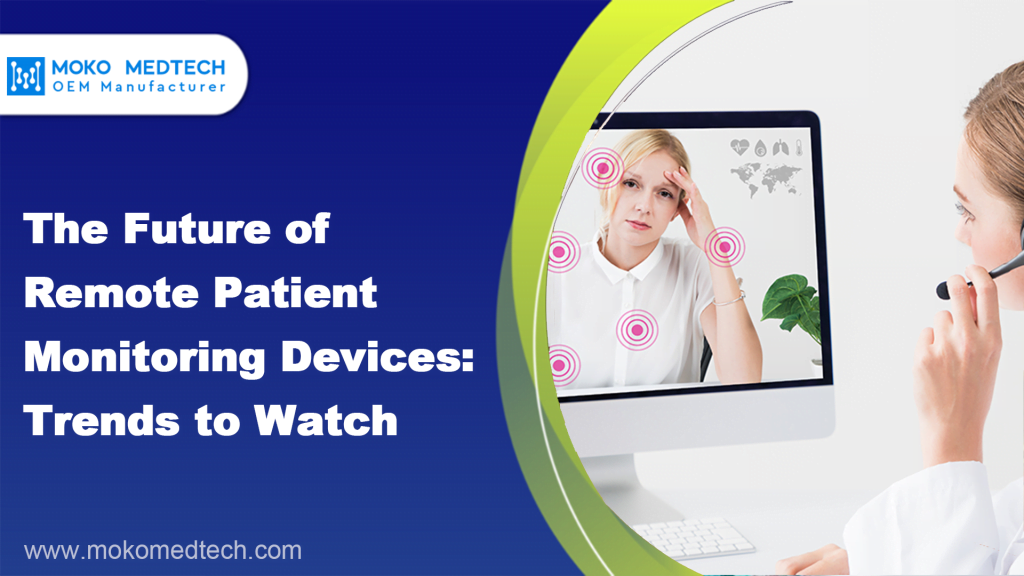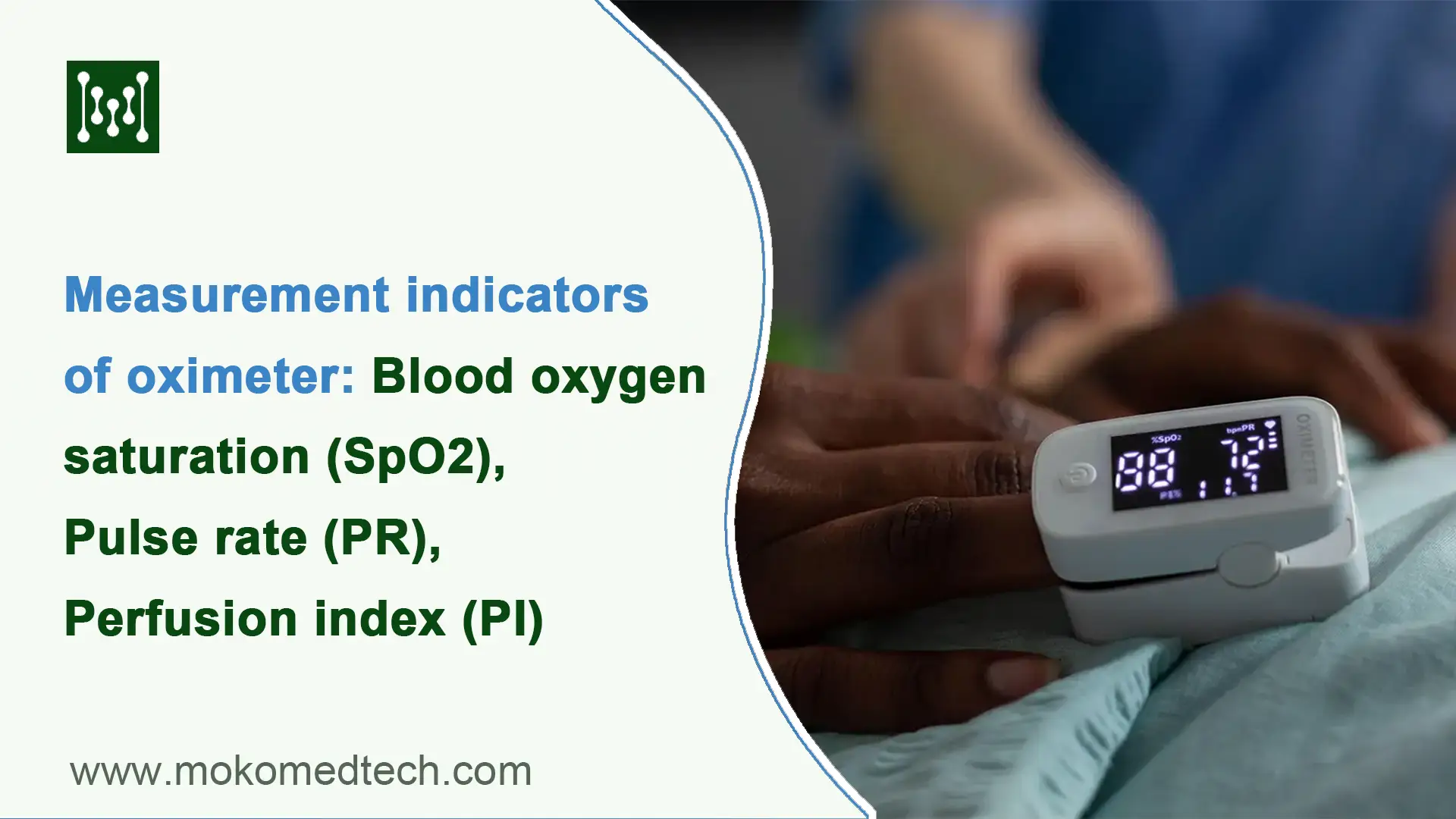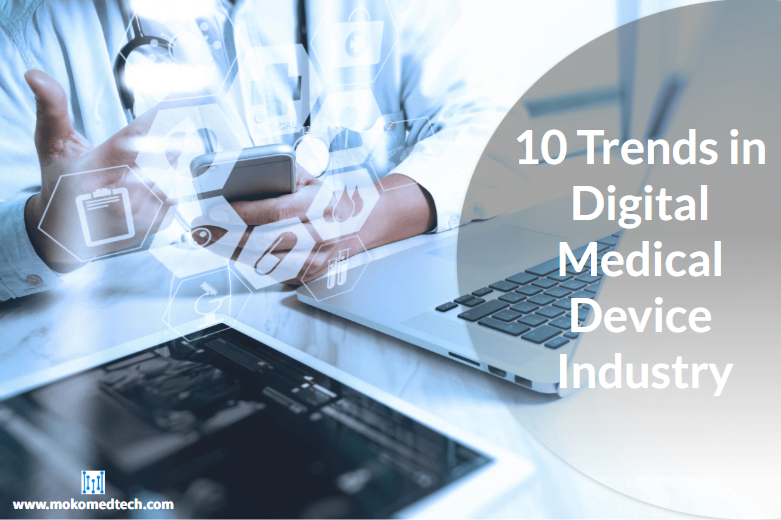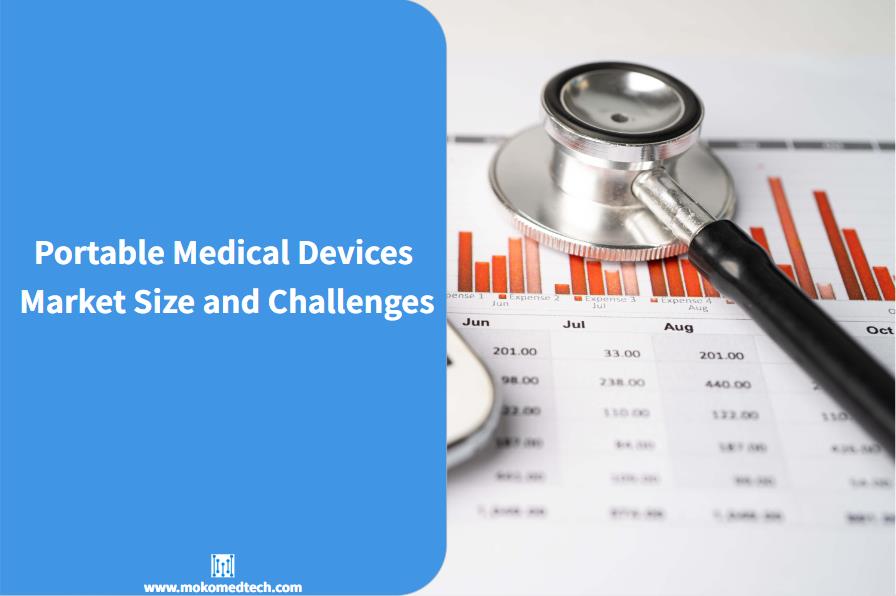I. Introduction
A. Knowing the importance of medical monitoring devices first
Medical monitoring devices have revolutionized the healthcare industry, allowing doctors and patients to track and monitor vital signs and other health metrics remotely. With advancements in technology, medical monitoring devices have become increasingly smart, providing real-time data that leads to better patient outcomes. Medical monitoring devices are important tools in healthcare. They allow healthcare providers to track the health status of patients and make informed decisions about their care. These devices can be used to monitor a wide range of parameters, such as blood pressure, heart rate, oxygen saturation, blood glucose levels, and more. We will explore key trends in medical monitoring devices, including wearables, remote patient monitoring, AI, and big data analytics, and discuss their potential impact on the future of healthcare. By understanding these trends, healthcare professionals and patients can stay informed about the latest innovations in medical technology and make informed decisions about their healthcare needs.
B. Patient Monitoring Devices Market Size
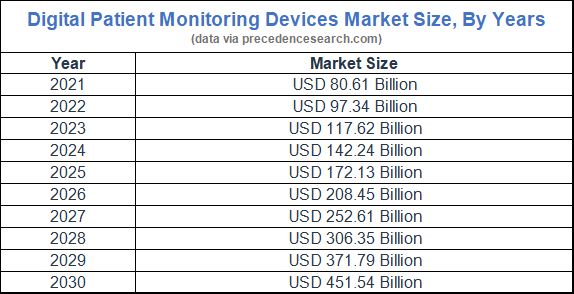
It is expected to grow at a compound annual growth rate of 21.1% from 2021 to 2030.
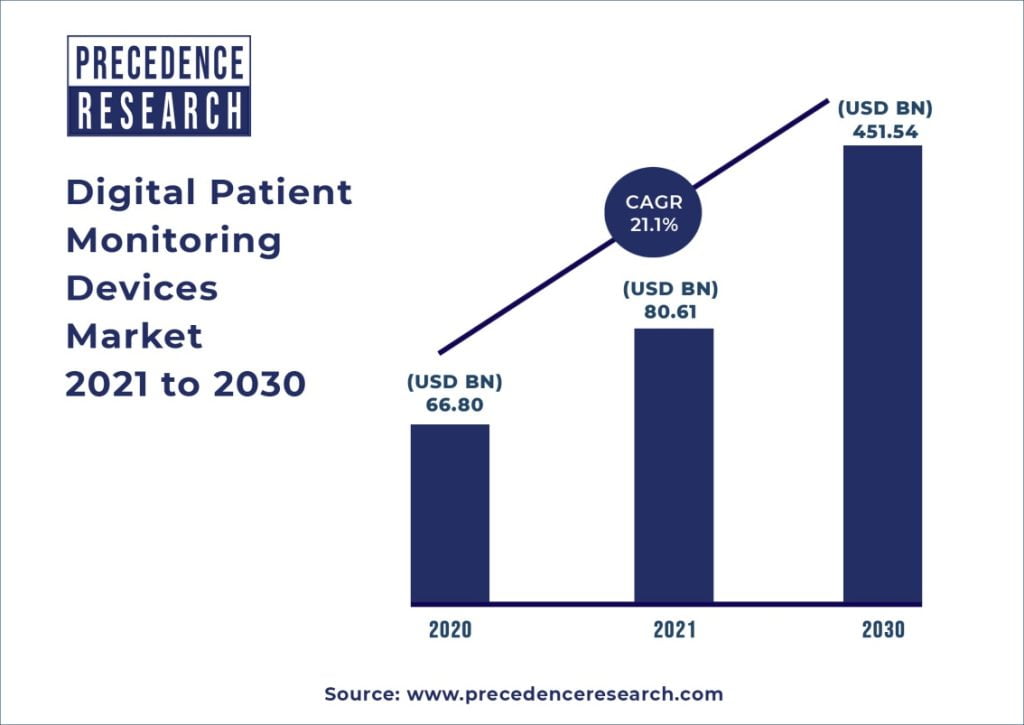
The increasing prevalence of chronic diseases, the growing geriatric population, and the rise in healthcare expenditure are some of the key factors driving the growth of the market. Wearable devices based on sensors are increasingly used by patients and healthcare providers for real-time tracking of patients’ vital signs and other health parameters. The growth in demand for wearable devices has led major market players to conduct extensive research and provide revolutionary digital patient monitoring devices. Additionally, the COVID-19 pandemic has increased the demand for patient monitoring devices as healthcare providers have increasingly relied on remote monitoring to provide care to patients.
Some of the major players in the market include Philips Healthcare, GE Healthcare, Medtronic, and Abbott Laboratories, among others. The market is highly competitive, with players focusing on product innovation, partnerships, and acquisitions to expand their market share. However, the market faces challenges related to data privacy and lack of product knowledge among the elderly who are the largest consumers of digital patient monitoring devices. Nonetheless, the increasing elderly population, coupled with improvements in internet penetration in developing countries, is creating new opportunities for the growth of the digital patient monitoring devices market.
II. Four Trends in Medical Monitoring Devices
A. Remote Patient Monitoring in Telemedicine
Using telemedicine to monitor a patient’s health status from home has become an increasingly popular way of healthcare. Telemedicine usually refers to the provision of medical care services at a distance through electronic communication and information technology. It provides a convenient way for patients to receive medical advice, diagnoses, and treatment options in real-time without visiting a clinic or hospital. Telemedicine is suitable for medical issues such as the management of chronic diseases, medication refills, and psychotherapy. It can be accessed using a stable internet connection and a web camera. Although telemedicine is unsuitable for emergency situations like heart attacks, strokes, lacerations, and broken bones that require X-rays, splints, or casts, it can reduce the need to visit the emergency room.
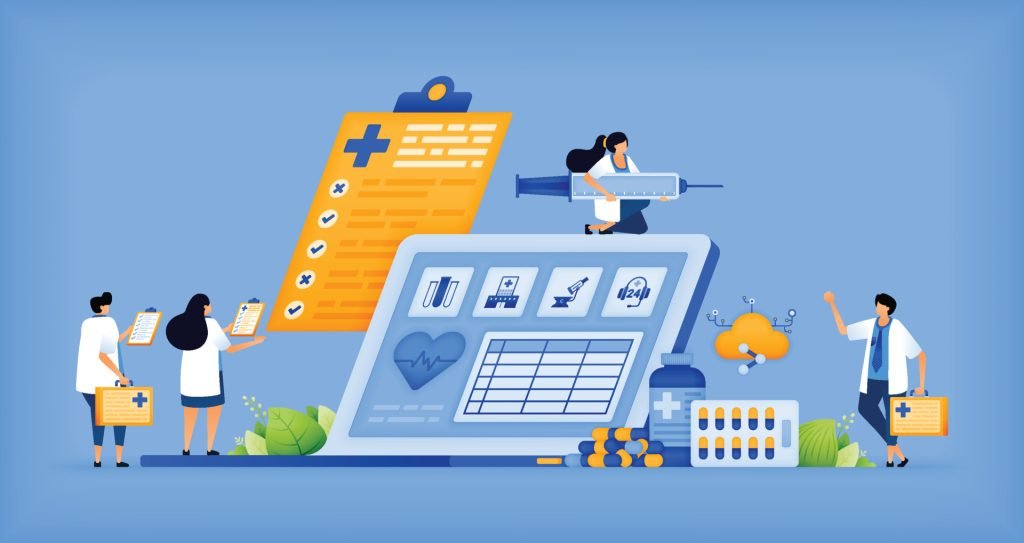
Remote patient monitoring devices in telemedicine
Common examples of telemedicine include health education services, remote patient monitoring of physical conditions such as vital characteristics, and remote consultations. Among these, remote patient monitoring can be used well in conjunction with telemedicine when it is necessary to monitor patients who are not convenient to visit the hospital. Telemedicine services allow for routine health screenings and effective management of patients with chronic diseases, as well as information sharing with healthcare professionals. Remote monitoring devices are also used for cardiac monitoring, respiratory monitoring, glucose monitoring, pregnancy monitoring, etc. according to different monitoring needs.
Remote patient monitoring devices usually include oximeters, Holter monitors, continuous glucose monitors(CGM), etc. These devices can monitor various health data of the user’s body, such as blood pressure, blood glucose, blood oxygen saturation, etc. These monitoring data not only allow patients to know their own health condition but also allow doctors to understand the patient’s condition and provide the correct diagnosis and treatment in time.
Advantages and disadvantages of using remote patient monitoring devices in telemedicine
Telemedicine has several advantages, but it also has several disadvantages.
Advantages
Convenience: Remote patient monitoring devices allow patients to receive healthcare services from the comfort of their homes. This eliminates the need for travel, waiting rooms, and in-person appointments, making healthcare services more accessible to people who live in remote areas or have mobility issues.
Real-time monitoring: With remote patient monitoring devices, healthcare providers can monitor a patient’s health in real time. This allows for early detection of potential health problems, which can lead to more timely and effective interventions.
Cost savings: Telemedicine reduces the need for in-person appointments, saving patients money on transportation, parking, and other related expenses. It can also reduce the burden on healthcare providers, allowing them to see more patients in less time.
Disadvantages:
Limited physical examination: Remote patient monitoring devices do not provide a complete physical examination, which can limit the accuracy of diagnoses. This may result in a delay in receiving the appropriate treatment.
Technical issues: Telemedicine relies heavily on technology, which can be prone to technical issues. Poor internet connection, device malfunctions, or user error can all lead to inaccurate data collection or transmission.
Privacy and security concerns: Transmitting medical data over the Internet can lead to privacy and security concerns. Patient’s health information is sensitive and confidential, and there is a risk of data breaches or hacking.
B. Wearable Devices
Wearable devices are a popular trend in medical monitoring devices. These devices can be worn on the body or clothing and are capable of tracking various health metrics, such as heart rate, blood pressure, and sleep patterns. Wearable devices have become more sophisticated and accurate over the years, with many capable of providing real-time data to healthcare professionals and patients.
The rise of wearable devices can be attributed to the increased use of mobile technology and the Internet of Things (IoT). Many wearable devices can connect to smartphones and other mobile devices, allowing users to access data from anywhere at any time. This level of accessibility has made wearable devices more popular among patients, who can now take a more active role in managing their health.
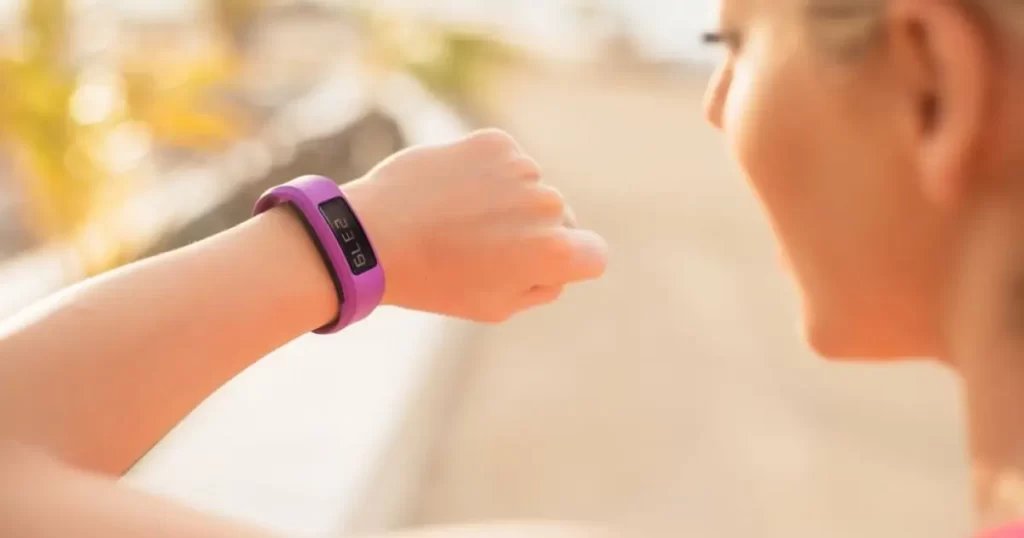
Common Applications
Examples of wearable medical monitoring devices include fitness trackers, smartwatches, and continuous glucose monitors. Fitness trackers, such as Fitbit, track physical activity and sleep patterns, while smartwatches, such as the Apple Watch, can monitor heart rate and other vital signs. Continuous glucose monitors are used to tracking blood sugar levels in patients with diabetes.
Advantages and Disadvantages
Advantages
Convenience and Accessibility: Wearable devices are highly portable and can be worn continuously, making it easy for patients to track their health metrics throughout the day. The data collected by these devices can be easily accessed by both patients and healthcare professionals, making it easier to monitor and manage chronic conditions.
Real-time Data: Wearable devices can provide real-time data, allowing patients and healthcare professionals to make informed decisions about their care. This is especially important in emergency situations or for patients with critical conditions.
Improved Patient Outcomes: Wearable devices can help patients better understand their health and make positive changes to their lifestyle or treatment plan. By providing continuous monitoring and feedback, patients may be more motivated to follow their care plan and make necessary adjustments.
Disadvantages
Accuracy Issues: Some wearable devices may not be as accurate as traditional medical devices, leading to false readings or incorrect diagnoses. This can be especially concerning for patients with serious or chronic conditions.
Privacy and Security Concerns: The data collected by wearable devices may be sensitive or personal, raising privacy and security concerns. Patients and healthcare professionals need to be aware of these risks and take steps to protect patient data.
Lack of Regulatory Oversight: There is currently limited regulatory oversight for wearable devices, meaning that manufacturers may not be required to meet specific standards for accuracy or safety. This can make it difficult for healthcare professionals to know which devices are reliable and effective.
C. Artificial Intelligence (AI) and Machine Learning
Artificial Intelligence (AI) and machine learning are rapidly emerging technologies that have the potential to transform medical monitoring devices. AI refers to the ability of machines to learn and make decisions based on data, while machine learning is a subset of AI that enables machines to improve their performance without being explicitly programmed.
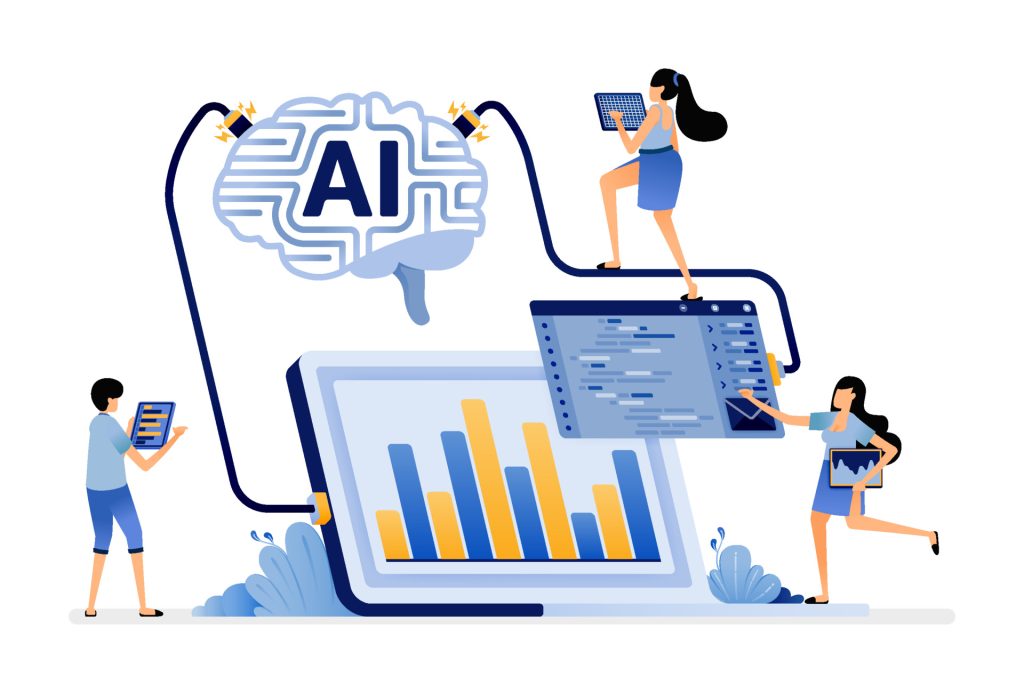
The use of AI and machine learning in medical monitoring devices involves the integration of algorithms that can analyze large amounts of patient data and generate insights in real time. This can help healthcare professionals identify trends and patterns that may not be immediately apparent, leading to more accurate diagnoses and treatment plans.
Common Applications
Examples of AI and machine learning in medical monitoring devices include remote patient monitoring systems, diagnostic tools, and predictive analytics software. Remote patient monitoring systems can use AI and machine learning algorithms to monitor patient data in real-time and alert healthcare professionals to potential issues. Diagnostic tools can analyze medical images or other data to help healthcare professionals make accurate diagnoses. Predictive analytics software can help identify patients who are at risk of developing certain conditions and provide proactive treatment.
Advantages and Disadvantages
Advantages
The advantages of using AI and machine learning in medical monitoring devices include their ability to analyze large amounts of data quickly and accurately, leading to more precise diagnoses and treatment plans. These technologies can also help healthcare professionals identify potential issues before they become more serious.
Disadvantages
However, there are also some disadvantages of using AI and machine learning in medical monitoring devices. These include the potential for errors or inaccuracies in the algorithms, as well as concerns around the security and privacy of patient data. Additionally, these technologies may not be accessible to all patients due to cost or other barriers. Healthcare professionals should consider these factors when deciding whether to incorporate AI and machine learning into their practice.
D. Big Data and Analytics
Big data and analytics refer to the collection and analysis of large amounts of data to uncover insights and patterns. In medical monitoring devices, big data and analytics can help healthcare professionals make more informed decisions about patient care by providing a comprehensive view of a patient’s health status.
The use of big data and analytics in medical monitoring devices involves collecting data from various sources, such as medical records, wearables, and medical devices, and analyzing it to identify patterns and trends. This can help healthcare professionals identify potential health risks or issues, as well as monitor the effectiveness of treatments over time.
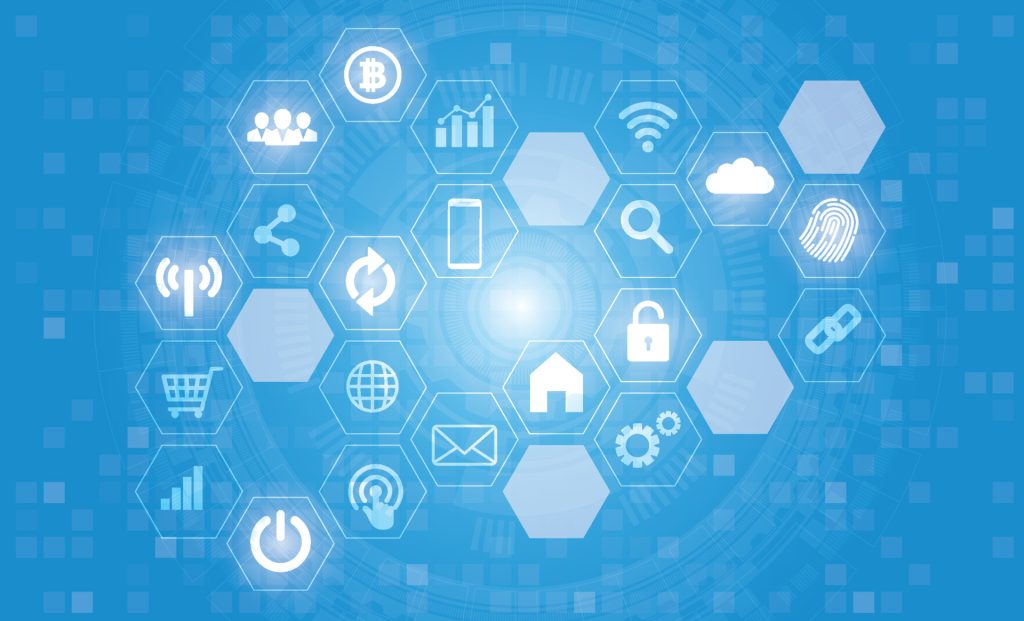
Examples of big data and analytics in medical monitoring devices include electronic health records (EHRs), population health management tools, and data-driven clinical decision support systems. EHRs can be used to track patient data over time and identify potential health risks or issues. Population health management tools can help healthcare professionals monitor the health of entire populations and identify trends that may require intervention. Data-driven clinical decision support systems can help healthcare professionals make more informed decisions about patient care by providing real-time insights and recommendations based on patient data.
Advantages and Disadvantages
Advantages
The advantages of using big data and analytics in medical monitoring devices include their ability to provide a comprehensive view of a patient’s health status, which can help healthcare professionals make more informed decisions about patient care. These technologies can also help identify potential health risks or issues before they become more serious.
Disadvantages
There are also some disadvantages including concerns around data privacy and security, as well as the potential for errors or inaccuracies in the data. Additionally, these technologies may require significant resources and investment, making them inaccessible to some healthcare professionals or patient populations.
III. Conclusion
The future of medical monitoring devices has unlimited possibilities with significant advances in remote patient monitoring, wearable technology, artificial intelligence and machine learning, and big data and analytics. These trends could have a significant impact on healthcare. At the same time, however, the arise from the use of these technologies, such as privacy and security concerns, as well as the potential to exacerbate existing medical disparities. Therefore, healthcare professionals must approach these technologies with caution and care, working to ensure fair and safe use of technologies related to medical monitoring devices and taking steps to protect patient data. MOKOMEDTECH is also always dedicated to creating innovative and reliable medical monitoring devices that empower healthcare professionals to provide superior patient care.
